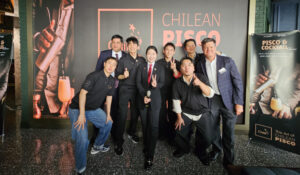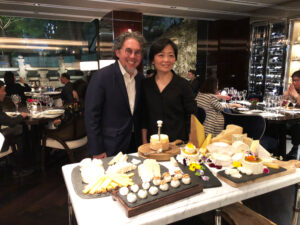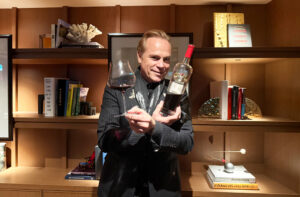때때로 사랑받는 한편 종종 외면당하는 '남아공산 포도'(피노타주 협회[Pinotage Association]가 남아공의 국민 포도로서 애정을 담은 표현에 따르면)인 피노타주(Pinotage)가, "생산 방식에 있어서 어떤 변화와 발전이 있었는가?"에 관한 물음표는 늘 있어 온 진부한 질문인 듯하다.
최근 몇 년 간, ‘슈냉(Chenin) 포도 품종(와인)에 열광’하는 새물결로부터 피노타주에 대한 소소한 관심이 표명되어 왔다. 무겁지 않은 스타일의 라이트한 스타일의 레드 와인이 유행의 바람을 타면서, 생쏘(Cinsault) 품종은 사람들의 이목을 한층 더 집중시켰고, 이런 가운데 피노타주는 생쏘와 같은 ‘새로운 물결’ 스타일의 와인을 모델로 삼아 변모하는 경향을 보여왔다. 예를 들면 조기 수확을 통한 신선한 스타일과 낮은 도수의 알코올, 그리고 오크의 개입을 지양하고 오래된 배럴을 사용하는가 하면 포도송이를 통째로 자연 발효하는 등 흔히 말하는 ‘최소한의 개입’을 적용함으로써 과실 본연의 특징을 극대화한 와인 양조법을 들 수 있다. 흥미롭게도 아마 가장 처음으로 이런 스타일의 피노타주를 만든 사람은 선구적인 극단주의자인 크레이그 호킨스(Craig Hawkins-내추럴 와인메이커이자, 남아공 스킨컨택 양조법의 창시자, 현 테스타롱(Testalonga) 와이너리 소속)였다. 그가 초기에 만든 라머슈크(Lammershoek) 와이너리의 람(LAM) 레인지로, 필자가 기억하기로는 2010년이 첫 빈티지이고 기분 좋고 발랄한 신선함을 선사해 주며 13%의 알코올을 지닌 와인이었다. 현재 라머슈크 와이너리의 와인메이커인 죠리 뒤 플레씨스(Jorrie du Plessis)는 훨씬 더 낮은 알코올에서 우수한 품질의 ‘미스터리(Misteries)’ 라인업을 생산하고 있다.
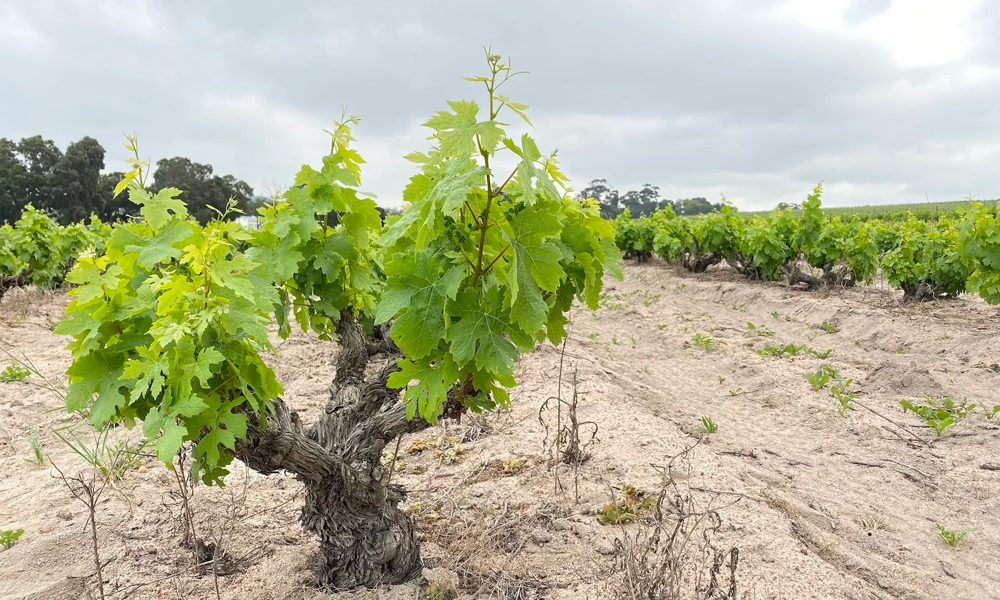
아마도 피노타주에 대한 ‘힙스터’ 접근 방식의 가장 찬사를 받는 예는 사이온스 오브 시나이 페닉스(Scions of Sinai Féniks)일 것이다. (크리스챤 에데스(Christian Eedes)의 2021년 빈티지 평론 참조; here ). 2018년 빈티지는 11.5%의 알코올도수로서 필자의 취향에는 너무 가벼웠지만 실제로는 훌륭할 정도로 신선했다. 와인은 현재도 여전히 11.5%의 알코올을 왔다 갔다 하고 12%를 약간 넘는 것 같다. 제이미 구디(Jamie Goode)는 기사를 통해 필자보다 이 와인을 호평한 것으로 알고 있다. 그는 지금은 아쉽게도 사라진 David & Nadia 버전과 Féniks를 “적시에 따낸 포도로 만들었으며, 추출하기보다는 우러나게 하는 방식으로 생산, 그리고 새로운 오크의 개입이 발견되지 않았다”라며 ‘훌륭한 와인’으로 선정했다.
최적의 시기에 포도를 땄다고? 필자의 생각은 다르다. 11.5%의 알코올 도수로 필자에게 충분히 매력적인 와인은 극소수다. 그러므로 더더욱 이 와인을 ‘훌륭한’ 와인으로 간주할 수 있다. 신선하고 향기롭고 매력적일 수 있는 요소들이 뒷받침한다. 그러나 나는 이 “미묘하고 우아한 스타일이 고급 와인 분야에 있어 피노타주의 미래”라는 제이미의 주장에 동의할 수 없다.
다른 것은 차치하고, 그러한 독단적인 접근 방식은 캐논캅 블랙 레이블(Kanonkop Black Label)이나 비스라아르(Beeslaar)와 같은 와인을 암묵적으로 무시하는 경향이 있는데, 이는 터무니없는 것이다.(제이미가 나의 권위적인 판단을 용서하길 바란다) 이 두 와인은 의심할 여지 없이 ‘훌륭한’ 와인이며, 피노타주를 마치 로버트 파커를 기쁘게 하려고 만든 까베르네 소비뇽처럼 간주하곤 하는, 일반적으로 모호한 관례에서 탁월함을 보여주는 유일한 예는 아니다. 하지만 나는 파워풀하고 오크가 많으며 단맛이 두드러지는 피노타주는 지양하고, 신선하고 가벼운 와인으로 대체하는 것을(심지어 12% 미만) 지향해야 한다는 데 동의한다. 까베르네나 시라, 메를로도 마찬가지 이야기다. 제이미도 기억하듯이 본연의 스타일, 커피 스타일의 피노타주를 즐기는 사람이 많이 있다는 사실을 말이다.
‘괴물’에 비유되곤 하는 강한 스타일의 와인이 죽어가고 있다는 현실은 내버려 두고, 나 자신은 한 잔 이상의 블랙 레이블은 원하지 않을 것이다. 그 멋진 와인(실제로 최고의 빈티지에선 고급 보르도보다 고급 부르고뉴를 더 연상시키는)을 배제한다는 것은 와인 세계에 있어 큰 손실이 될 것이다. 그럼에도, 힙스터와 전통적인 스타일 사이에서 나는 더 많은 와인을 만나보고 싶다. 예를 들어 적절하게 오크에 숙성한 알코올 13.5%의 와인이라면, 다음번 점심에 곁들이거나 일몰을 바라보며 마시는 것 이상의 즐거움을 경험할 수 있을 것이다. 심지어 약 13%인 ‘Ex Animo’의 ‘Rossouw Gouws & Clark’, 약 12.5%인 ‘False Bay Last of the First’와 같이 더 가벼운 것도 있다.(이 와인들을 나는 아직 맛보지 못했지만 별 5개 와인들로 알려졌다)
내 생각에 대부분의 와인 바에서 판매하는 11-12%의 알코올 도수(맛있고, 우아하고, 미묘한)의 생쏘 와인들은 본질적으로 평범하고, 카테고리를 발견한 초반의 즐거움 이후엔 다소 지루해 보인다는 점에서 운이 다했다. 비슷한 스타일의 피노타주도 마찬가지다. 몇 년 이상 지속되지는 않을 ‘본질적인 평범함’은 와인의 세계에서 중대한 일이 아닐뿐더러 그러한 와인들도 존재하는 게 맞다. 다만 이러한 속성의 와인은 근본적으로 고급 와인이 아니며 종종 평론가들로부터 얻는 높은 점수와 높은 가격을 받을 자격은 없다고 생각한다.
피노타주는 그 이상의 것을 보여 줄 수 있다. 지금은 생각나지 않거나 잘 모르는 다른 예가 분명히 있을 것이다. 부루어 빈트너스(Bruwer Vintners), 리베르테(Liberté), 앵거스 폴 트랜지언트 랜드(Angus Paul Transient Lands), 자이언트 패리윙클 썬 스파이더( Giant Periwinkle Sun Spider) 그리고 펠라 토마스 돌랜드(Pella Thomas Se Dolland)와 같이 약 13.5%의 알코올로 훌륭하고 복합적이며, 어릴 때도 즐기기 좋지만 장기 숙성에도 훌륭한 피노타주를 예로 들 수 있겠다.
요즘 피노타주가 시간이 지남에 따라 숙성력을 보여주는 진지한 와인은 물론 가벼운 스타일의 와인을 만들 수 있는 훌륭하고 ‘다재다능’한 포도라는 것에는 의심의 여지가 없다. 다양한 레인지와 스타일의 피노타주를 선반에 보관하는 것은 아무런 문제가 없다. 오히려 많은 이점이 있다.(블렌딩 재료로서의 피노타주에 대한 이야기는 아직 하지 않았다) 하지만 잘 만들어진 중립적인 스타일이 더 강력하게 다가올 것이라는 사실에 대해 특히 기쁘게 생각한다: 진정한 맛의 깊이를 보여줄 만큼 충분히 익었지만 달고 울트라-파워풀할 정도로 과숙하진 않은 와인, 오크 풍미 그 자체보다 오크 숙성으로 인해 복합미와 장기 숙성의 가능성을 보여주는 와인, 신선하지만 제공할 수 있는 매력 이상의 무언가를 지닌 와인 – 무게감 있는 와인이지만 최상의 중립적인 밸런스를 지닌 와인 말이다. 물론, 난 이러한 것을 케이프 까베르네 (Cape Cabernet)와인에서도 바란다.
글 팀 제임스(Tim James) 번역 최민아

저자인 팀 제임스(Tim James)는 남아프리카 공화국의 주요 와인 해설가 중 한 명으로, 다양한 국내외 와인 출판물에 기고하고 있다. 그는 ‘Platter's’ 지의 테이스터(및 부편집장)이기도 하다. 그의 저서인 남아프리카의 와인 – 전통과 혁명(Wines of South Africa – Tradition and Revolution)은 2013년에 출판되었다.
Tim James: What’s happening with Pinotage?
It seems to be an ever-ripe question. Is there some evolution in the way the sometimes beloved, sometime execrated “national grape” (as the Pinotage Association has fondly and grandly called it) is being ushered into bottles?
In fact, the last few years have shown a bit – though not a lot – of interest in pinotage from the generally chenin-obsessed new wave. For the fashionable trend to light reds there’s been much more focus on cinsault, and any interest in pinotage has tended to have new-wave versions of this grape as a model – meaning early picking and consequent freshness and low alcohol, as well as the old barrels, natural and wholebunch ferments, and generally “minimal intervention” that has wider application. Interestingly, it was the pioneering extremist Craig Hawkins (now of Testalonga) who made what was perhaps the earliest such pinotage, for Lammershoek’s Lam range – the maiden 2010, a revelatory delight of freshness I remember it being, had 13% alcohol. Jorrie du Plessis now makes a perhaps superior version there, for the Mysteries line-up, at an even lower alcohol level.
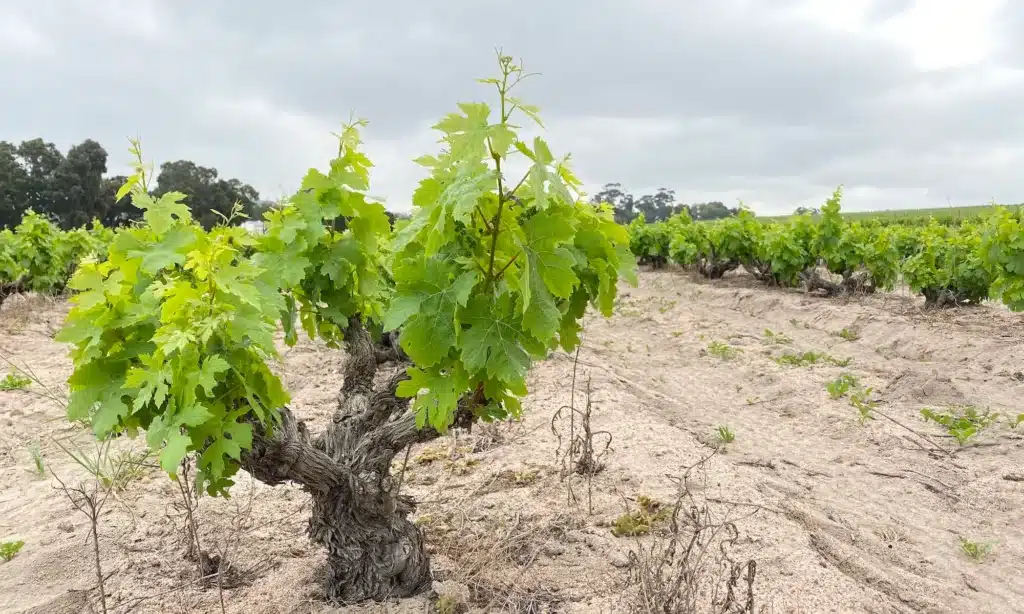
Perhaps the most adulated example of the “hipster” approach to pinotage is Scions of Sinai Féniks (see here for Christian Eedes’s appreciation of the current 2021). I remember finding the 2018 too light for my taste – almost insipid though indeed splendidly fresh – at 11.5% alc, and the wine still seems to hover between that and just over 12%. Jamie Goode, in an article for this website, was more appreciative than I. He singled out the now already sadly defunct David & Nadia version and Féniks as “excellent wines: made from grapes picked at the right time, infused rather than extracted, and no new oak insight”. (I presume he meant “in sight” rather than “insight”, which would convey a rather different impression.)
Picked at the right time? Not in my opinion; the number of wines which carry what is for me sufficient vinosity and interest at 11.5% alcohol is minuscule. Sufficient, that is, to count as “excellent” wines. Fresh, perfumed and charming, perhaps. But I can’t agree with Jamie’s assertion that this “ethereal, elegant style is Pinotage’s future for the fine wine segment”.
Apart from anything else, such an exclusive approach tends to implicitly dismiss wines like Kanonkop Black Label and Beeslaar, which is obviously nonsensical (if Jamie will forgive my making a magisterial judgement in turn). Those two wines are, surely, unquestionably “fine” – and they are not the only examples of excellence in the generally dubious tradition of treating pinotage as though it were cabernet sauvignon made to please Robert Parker. I would agree, however, that to lose the majority of powerful, heavily oaked, sweet and heavily extracted pinotages and replace them with fresh, light wines – even those under 12% alcohol – would be a boost. The same would also be true of cabernet or syrah or merlot. Though, as Jamie remembers too, there do seem to be plenty of people who enjoy that style – and coffee-style pinotage too.
I would not, myself, often want more than a glass or so of Black Label, let alone some of the monsters out there whose time is surely coming to an end, but to lose that magnificent wine (which actually in its best vintages reminds me more of fine burgundy than fine bordeaux) would be a major loss to the world of wine. But I would like to see more wines between the hipster and the traditional styles. With wines of, say, 13.5% alcohol, judiciously oaked, one can aim at pleasures that go beyond accompanying the next lunchtime or bout of forgettable sunset sipping. Even, to an extent, those a bit lighter than this – like Rossouw Gouws & Clark from Ex Animo at about 13%, or False Bay The Last of the First at 12.5% (reportedly; I haven’t drunk this Platter’s five-star winner).
Just as, in my opinion, the great majority of wine-bar cinsaults at 11-12% alcohol levels (pretty, elegant, ethereal) are doomed to essential triviality and after the early pleasure of discovering the category do seem rather boring. So too are the equivalent pinotages. Essential triviality that won’t last more than a few years is absolutely ok and great to have around, but it’s not fine wine – and doesn’t deserve the big scores, and big prices, that it sometimes gets.
Pinotage can do more than that. I’m sure there are other examples that don’t come to mind now, or that I simply don’t know, but I’m talking about good, complex, youthfully enjoyable but ageworthy pinotages at around 13.5% alcohol, like Bruwer Vintners Liberté, Angus Paul Transient Lands, Giant Periwinkle Sun Spider, and Pella Thomas Se Dolland.
There’s no question these days that pinotage is a good, versatile grape that can make serious wines that develop with age, as well as light ones for the moment. There’s no harm – indeed a great deal of benefit – in having a range of styles on the shelf (and I haven’t even raised the subject of pinotage as a blending component). I’m particularly pleased, though, that a well-made middling style is coming through more strongly: ripe enough for a genuine depth of flavour but not overripe and sweetly ultra-powerful, with wood maturation to help give it complexity and ageability rather than the flavours of oak, fresh but with something more than charm to offer – serious wines, but modest in the best sense. It’s what I wish for Cape cabernet too, of course.
- Tim James is one of South Africa’s leading wine commentators, contributing to various local and international wine publications. He is a taster (and associate editor) for Platter’s. His book Wines of South Africa – Tradition and Revolution appeared in 2013.





